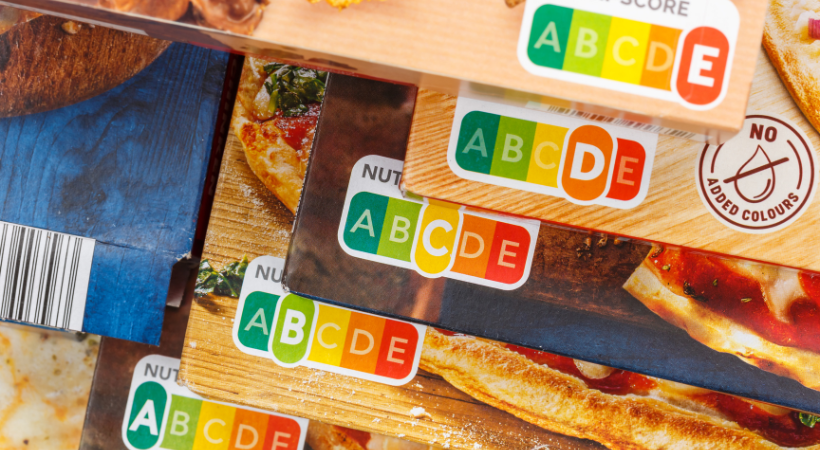‘Use By’ & ‘Best Before’: Food Date Label Requirements Explained
‘Use By’ & ‘Best Before’: Food Date Label Requirements Explained
Referred to as ‘durability indications’, ‘use by’ or ‘best before’ dates are legally required to be displayed on most food and beverage product labels and are a crucial aspect of food labelling compliance. As a food business, it’s important that you are aware of the rules and how to apply these on your products in order to keep consumers and your brands safe.

Below, we explore the differences between ‘use by’ and ‘best before’ dates; when each of these should be used and what the current guidance is in accordance with UK food labelling regulations.
What is a ‘Use By’ Date?
‘Use by’ dates refer to food safety and should be observed closely by consumers. Food is legally deemed safe to eat until midnight on the day specified on the label. After this date, the food should not be consumed, although exceptions exist if the food has been frozen before the use by date.
Use by dates are typically required on high-risk foods; meaning those foods which may become microbiologically unsafe after a given period, even if stored carefully by refrigeration. These foods include fish, meat, dairy products and pre-prepared foods.
While some foods past their ‘use by’ date might smell and look fine to eat, they can still contain harmful bacteria which could put somebody at risk of food poisoning. This is especially so for the elderly and very young children.
What is a ‘Best Before’ (BB) Date?
A ‘best before’, or ‘best before end’ date refers to the quality of the food, rather than its safety. If a food has passed the ‘best before’ date on its label, it’s still safe to eat (and could be still delicious too!), but it may not be as crisp, crunchy or as flavoursome as it once was. A quick sensory check (see, smell, taste) should be carried out, and it should be safe to eat. People who are unable to test for freshness (e.g. consumers whose sense of taste or smell is impaired) should stick to the ‘best before date’ on the pack.
‘Best before’ dates are used on a wide range of foods stored and packaged in different ways such as fresh, frozen, dried and tinned foods. Typically, these types of foods will have a longer shelf life.
What’s the Difference Between ‘Use By’ and ‘Best Before’?
The main difference between ‘use by’ and ‘best before’ dates is safety.
A food past its ‘use by’ date is not deemed safe to eat and should be thrown away and cannot be sold or passed on to end users. Whereas food past its ‘best before’ date is still safe to eat, albeit the texture/flavour might not be as appealing as it once was. Foods with an expired best before/best before end can still be sold. It is illegal to sell food products after their ‘use-by’ date.
What are the regulations around ‘Use by’, ‘Best Before’ and ‘Best Before End’ (BBE) dates?
The rules around ‘best before’ and ‘use by’ dates are set out in the UK assimilated Food Information Regulation (EU) 1169/2011. This defines the ‘Date of minimum durability of a food’ as ‘the date until which the food retains its specific properties when properly stored’; we’ve summarised these rules below.
‘Best Before’:
Foods with a shelf life below 3 months may be marked with a day and month only. Like this: ‘BB 01/04’, or you can use the year too, e.g. ‘BB 01/04/2024′. You can use the text ‘Best Before’ too instead of ‘BB’.
‘Best Before End’:
Is used when a date given is less specific for foods with a life between 3 months and 18 months, or event longer. If the date is within 3-18 months, you label with the month and the year, e.g. ‘BBE 04/2024′. If the date is over 18 months away, you can give either month and year, like above, or just the year: ‘BBE: 2024′.
‘Use By’:
Foods that needs a ‘Use by’ date may be marked with the day and month like this: ‘Use by: 1st April’ or ‘Use by: 01/04’. The year can also be added too e.g. ‘Use by 1st April 2024’ or ‘Use by: 01/04/2024’.
What about Storage Instructions?
‘Use by’ foods
Food products which include a ‘use by’ date must also clearly indicate how it should be stored for it to remain safe to eat until the use by date. If appropriate instructions are not given, the ‘use by’ date would be invalid and the food could become unsafe earlier. For example, meat, fish and dairy products might include the storage instruction ‘keep refrigerated’. Additional temperature guides may also be given too, such as ‘keep refrigerated at temperatures below 4°C’.’
‘Use by’ foods will usually need information on the label about how long after opening they can be kept safely, as well as where and how to store them. It’s important for consumers to have these instructions to avoid any food safety risks.
‘Best Before’ foods
Where ‘best before’ or ‘best before end’ dates are shown, storage instructions are required only in cases where storage conditions are needed to retain the quality of the product. For example, ‘store in a cool, dry place’ might be required for foods which would absorb moisture such as cereal products.
Storage instructions are mandatory and a legal requirement where they are necessary to maintain the safety of the food.
How to Choose Between ‘Use by’ and Best Before’
Food business operators (FBOs) must decide whether their product requires a ‘use by’ or ‘best before’ date on the label before it goes to market. This decision should factor in the type of product, the ingredients it contains, and how it has been processed. Such decisions on durability must be made based on engagement with food safety professionals.
It is a FBO’s responsibility to carry-out adequate testing for each new product to look at its microbiological safety time limits (when harmful bacteria become a hazard). They must also and to continue to monitor any consumer complaints about a food to make sure testing and analysis data is robust and the durability date is correct to maintain safety.
Even if a product is very similar to another on the market each product is unique, so its durability should be considered specifically.
If a food business is certain that there is no safety risk in consuming the product after the durability date, a ‘best before’ date should be used on the label.
What Food Products Don’t Require a Durability Date?
The Food Information Regulation allows for a few types of products to be exempt from carrying a minimum durability date. These include:
- Fresh fruit and vegetables
- Short shelf-life bakery goods
- Wine
- Alcoholic beverages with over 10% alcohol content (read our Alcohol Labelling Requirements guide to learn more)
- Vinegar
- Salt
- Sugar
- Confectionary products that are composed almost entirely of sugar
- Chewing gum
Some of the foods listed are safe for very long periods because they are naturally resistant to the growth of harmful bacteria (e.g. alcohol, vinegar, sugar, salt). Some listed above have a short shelf-life anyway (e.g. bakery products). Or they are so noticeable if they are spoiled, that they wouldn’t be consumed anyway (think rotten fruits and vegetables!).
What About Eggs ‘sell by’ and ‘display until’ dates?
Interestingly, under legislation specific to eggs known as Assimilated Commission Regulation (EC) No 589/2008, eggs can have both a ‘best before’ AND a ‘sell by’ or ‘display-until’ date.
The best-before date is mandatory. The durability date must be no longer than 28 days from when the eggs were laid, and sellers must sell the eggs within 21 days of laying. Whilst the Regulation does not say a ‘sell by’ or ‘display until’ date must be used, it can help to ensure eggs are sold within the required 21 days. Where no ‘sell-by’ or ‘display until’ date is shown, eggs should be removed from sale seven days before their ‘best before’ date.
Date Labelling and Food Waste – Latest Developments
Over the past few years, some UK supermarkets and dairy manufacturers have moved away from using ‘Use By’ dates, instead adding ‘Best Before’ dates on products such as milk. About 490 million pints of milk are thrown out by households (WRAP, 2018) so this small change could have a big impact and has been encouraged by WRAP when it is safe to do so to reduce food waste.
Additionally, 54,000 tonnes of yogurt a year are thrown away, with half of yogurts not even being opened. As such, in April 2023, Tesco switched the ‘use by’ date to a ‘best before’ date on more than 30 yogurt lines in its latest move to help customers reduce their food waste.
Switching to ‘Best Before’ dates means that consumers can use their judgement on whether products such as milk are still good to use after this date, rather than throwing it away.
All milk is processed differently and it’s the manufacturer’s decision whether to use a ‘Use by’ or ‘Best Before’ date depending on the tests, risk assessments and speaking to the relevant industry competent authority.
These latest moves follow a market-leading initiative started by supermarkets in 2018 which saw the ‘best before’ dates removed from more than 170 fruit and vegetable lines to help customers waste less food at home.
Support With ‘Use By’ and ‘Best Before’ Labelling Compliance
At Ashbury, we have a wealth of experience advising food and drink businesses on all aspects of food labelling compliance, including the use of ‘use by’ and ‘best before’ dates. Our team can help your business to launch food and drink products confidently and compliantly, across different markets globally.
If you’d like to speak to us to find out how we can help, please get in touch here.

Author: Rebecca Kaya
I have dedicated over 17 years' of my career to keeping end consumers safe. As a Regulatory Specialist, I help clients to have confidence in their compliance by providing practical advice across the food chain - from the point of primary production, to final product labelling.
Next reads
Changes to England’s Bread and Flour Regulations: What you need to know
Natasha Allergy Research Foundation: Clinical Trial Update, May 2024
Nutri-Score Food Labelling: How & When to use it
Leadership Spotlight – Zoe Jordan, CEO
Keep up to date with our latest insights
Subscribe to our mailing list to stay in touch with the latest news, insights and updates from Ashbury






